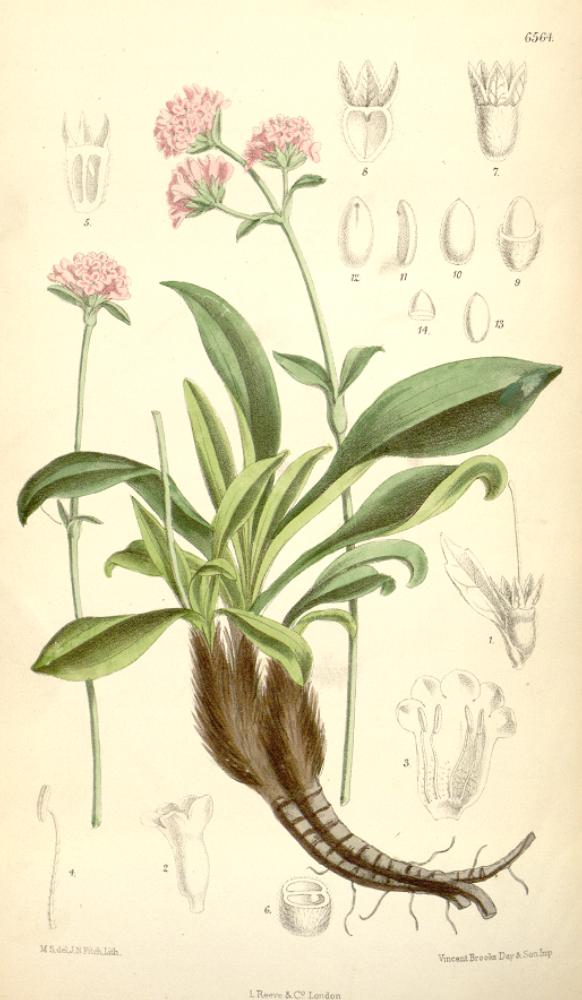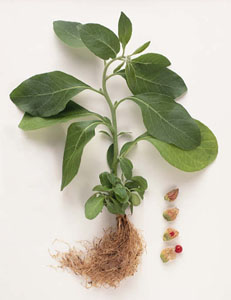
15th March 2011
We spent a lovely rainy day, tucked into our classroom/lab/kitchen with Duncan Ross recounting about his adventures in the Himalayas, trekking and herb hunting. He’s written an account of his time there in a publication ‘In search of Jatamansi’ which you can order from Poyntzyfield Nursery.
His story relates his quest for the elusive and increasingly rare Himalayan medicinal plant, Jatamansi – a plant that has been used and venerated for over four millennia in Tibeten and Indian medicine (Ayurvedic). It was also used in the Middle East (known as Nard) and is mentioned in the Bible (John 12,3) as the oil that Mary anointed the feet of Jesus with at the Last Supper. It appears too in the Song of Solomon and was reputedly use by the Mugal Empresses Nur Jahan. Unsurprisingly it is only one of many (in fact 15,000) plants and spices used in traditional medicine there.
The Himalayas have been a haven for souls seeking God and for plant hunters seeking knowledge and some seeking riches - a tradition that still continues. Scots were some of the earliest European plant hunters who explored these regions and collected both new species and reports of their medicinal use. The geography of the Himilayas is surprising similar to Scotland, particularly the Highlands, and so we have been able to grow and cultivate Himalayan species with some success. Many of the most valued plants grow in the high rocky, ericaceous soil of the sub-alpine areas. Amongst those we considered were:
 Jatamansi (Nardostachys grandiflora or Nardostachys jatamansi) – in addition to its use as a highly valued essential oil, the roots are used to make cardiac and respiratory stimulants for treating palpitations and bronchial problems. It is also used in small doses for its action as a depressant on the central nervous system. A tincture or decoction of the dried roots is given for colic and flatulence (with added camphor and cinnamon) and it is used by Indian women as a highly aromatic hair tonic and darkener. Jatamansi has antibacterial and antifungal properties and is renown for its harmonising effect on metabolism
Jatamansi (Nardostachys grandiflora or Nardostachys jatamansi) – in addition to its use as a highly valued essential oil, the roots are used to make cardiac and respiratory stimulants for treating palpitations and bronchial problems. It is also used in small doses for its action as a depressant on the central nervous system. A tincture or decoction of the dried roots is given for colic and flatulence (with added camphor and cinnamon) and it is used by Indian women as a highly aromatic hair tonic and darkener. Jatamansi has antibacterial and antifungal properties and is renown for its harmonising effect on metabolismValerian jatamansi – is of a similar size and has a similiar root aroma to Nardostachys grandifloria, but it grows in woodlands and pine forests by streams. Its roots are traditionally dried and made into incense and it is used as a sedative to reduce stress and induce sleep.
 Himalayan Mandrake (Podophyllum hexandrum/emodi) is one of the very scarce wild plants that is rapidly disappearing due to over harvestation in the Himalayas. It has a reputation as an anticarcenogenic, but can be highly dangerous to use without medical supervision It produces a great mass of roots which are dried and used as a powder for treating worts. It is a excoratic – a herbal element that can burn tissue
Himalayan Mandrake (Podophyllum hexandrum/emodi) is one of the very scarce wild plants that is rapidly disappearing due to over harvestation in the Himalayas. It has a reputation as an anticarcenogenic, but can be highly dangerous to use without medical supervision It produces a great mass of roots which are dried and used as a powder for treating worts. It is a excoratic – a herbal element that can burn tissue Ashwaghanda - Indian Ginseng -(Withania sominifera) is one of the most important Ayurvedic medicinal herbs that grows at a lower altitude in the Himalayas. It is sometimes know as Winter Cherry in Europe as when grown free of frost the flowers fruit into small plum size shiny orange-red berries. An excellent ‘Adaptogen’, it can be used in a tonic it helps the body to gain resilience and balance. The leaves can be gathered fresh and made into a poultice to reduce swellings, burns and stings or when the root is harvested in autumn it is dried to treat a number of aliments including insomnia, infertility, impotence, rheumatic conditions. It is now being researched as an anti-tumour and HIV remedy.
Ashwaghanda - Indian Ginseng -(Withania sominifera) is one of the most important Ayurvedic medicinal herbs that grows at a lower altitude in the Himalayas. It is sometimes know as Winter Cherry in Europe as when grown free of frost the flowers fruit into small plum size shiny orange-red berries. An excellent ‘Adaptogen’, it can be used in a tonic it helps the body to gain resilience and balance. The leaves can be gathered fresh and made into a poultice to reduce swellings, burns and stings or when the root is harvested in autumn it is dried to treat a number of aliments including insomnia, infertility, impotence, rheumatic conditions. It is now being researched as an anti-tumour and HIV remedy.Kutki (Picrorhiza kurroa, also P.scrophulariflora) – is again an increasing rare plant and now on the endangered species list. It can be cultivated in Scotland quite easily and will thrive without too much attention. The leaves can be picked and used fresh as an appetitive stimulant and to ward off winter fevers, enhance liver function, repel intestinal worms and the rhizome dried and used in preparations.
Himalayan Burdock - Kuth or Costus (Sassurea costus) is one of those plants getting rarer to find in the wild too. It is listed under CITES (Convention on International Trade in Endangered Species). Used for millenia in both Chinese and Ayurvedic medicine, the roots have numerous purposes for example as a laxative, digestive and carminative. It can help to purify the system and clear away skin problems. The essential oil is used in perfumes and food.
As noted, many of the above plants (and numerous others) which have been traditionally harvested from the wild are now over-harvested and indeed endangered. There are thankfully, initiatives in both Tibet and India to change the collecting habits of local people and to curtail commercial harvesters. This takes the form of small-holdings high in the sub-alpine regions growing these species for companies like Pukka Herbs that sell them commercially, worldwide.
After lunch we went out to inspect our demonstration-herb-beds-to-be (in the rain). We uncovered our plots, got ahold of some hoes and made an attempt to organise them into some sort of shape. We also had a moment to dig in some of the exotic specimens delivered by Duncan from his nursery.
Later in the afternoon, settled with a ginger root tea to warm us up, we watched The Blue Poppy – Preserving Tibet, a film about traditional Tibetan doctors and efforts being taken to cultivate native herbs and plants in a sustainable way.


3 comments:
Hi,
Thanks for this valuable information. I am in the Himalayas for rare plants and I got solid information what we Indians do not know. Thank you.
Joseph
please write more about himalan herbs. The article is wonderful
I was diagnosed with HPV for 4 months and my doctor said it has no cure but not until I met Dr Onokun who help me get rid of it totally using natural herbs without any effect , reach out via. https://onokunherbs.com
Post a Comment